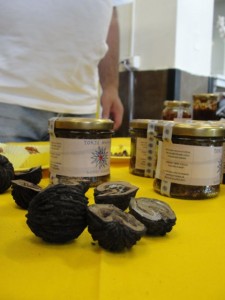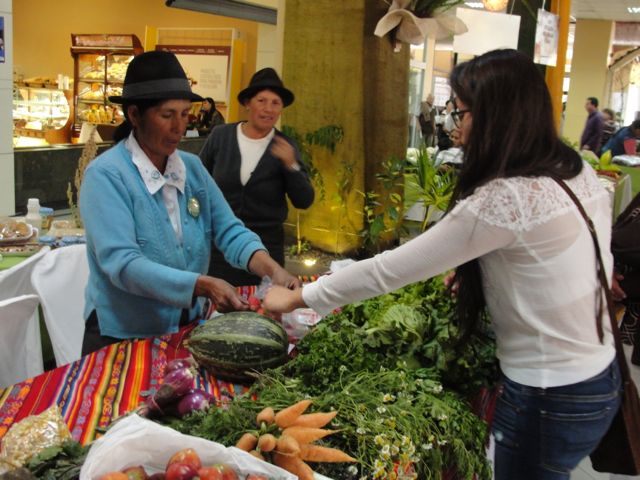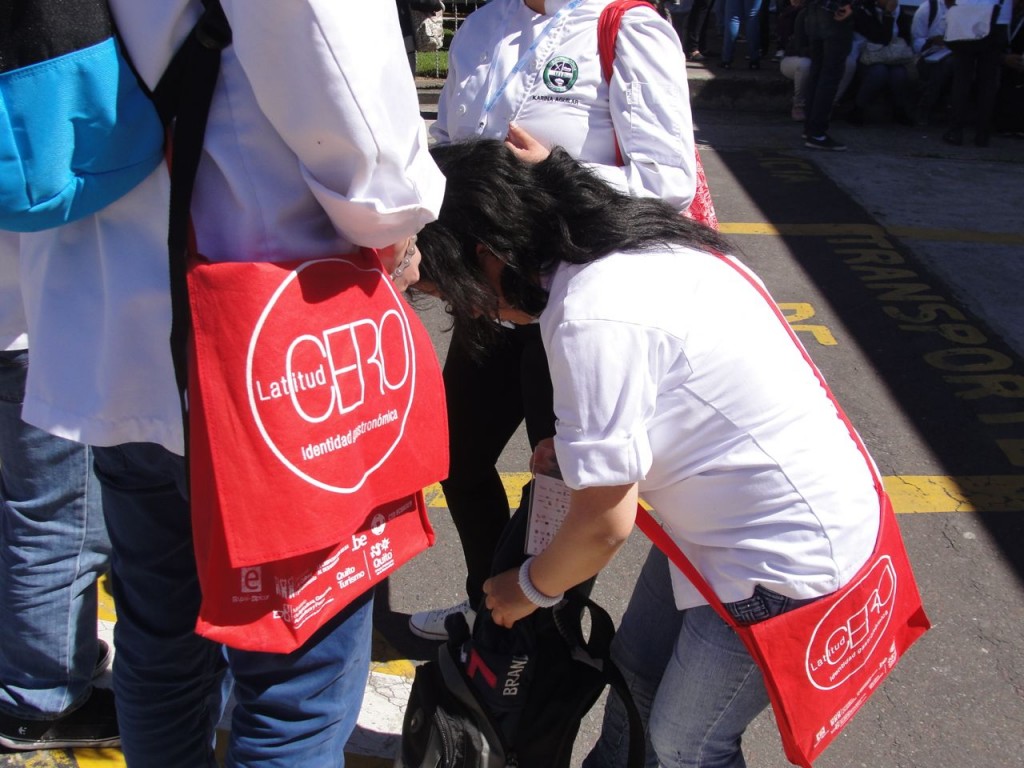“We need to codify products, see who produces them, where, how…and connect them more effectively. We must change lives through gastronomy.” Gaston Acurio at Latitud Cero, Ecuador.
Ecuador’s diverse cuisine had its chance to shine last week at the Latitud Cero – Ecuador Cultura Gourmet festival in that country’s highland capital, Quito. Often overshadowed by Peru, its more gastronomically prominent neighbor to the south, Ecuador is coming into its own with a cuisine that integrates influences from Indigenous and European ancestries, and combines biologically diverse ingredients from the sea, rainforest and high Andes.

“Today Latin America is the world’s gastronomic axis” were the welcoming words from Mauricio Acuña, one of the leading lights behind the event. And it has without doubt been a busy season in the region, with Latitud Cero – Ecuador Cultura Gourmet following shortly after Tambo in Bolivia and Mistura, with over 400,000 visitors, in Peru.
Ecuador’s festival brought together celebrity chefs, culinary treasure hunters, students, journalists, farmers and food startups in an inspiring mix of philosophy, technique and business, seasoned with the scents and flavors of fresh produce, sweet and savory dishes, coffee, chocolate and novel ingredients.
The event reflects a growing trend, with the focus not just on the art of cooking and the dazzling work being done by brilliant chefs – but increasingly on the source of the food and ingredients. “Without farmers there is no cuisine. They are the most important in the pyramid and we must respect them” emphasized Acuña.
Famed Peruvian chef, Gaston Acurio, made a call to “codify products, see who produces them, where, how and connect them more effectively. We must change lives through gastronomy,” a mission we passionately share here at Canopy Bridge.
As renowned author Ignacio Medina described it “behind [each dish] there are many other realities mixed in, overlaying and feeding a landscape filled with emotions.” Latitud Cero – Ecuador Cultura Gourmet worked to bring together those realities and Ecuador’s rich culinary landscape: A series of talks and seminars were complemented with an ongoing fair where over 100 farmers and enterprises shared their creations, putting the spotlight back on the producers who underpin it all.
Our favorites embody the diversity encountered at the event as well as the commitment to quality and positive impacts for farmers and the environment:
- The new high quality chocolate initiatives in Ecuador. Ecuador is the world’s biggest exporter of fine aroma cocoa, a country that, in the words of Lourdes Paez of Academia del Chocolate, “wouldn’t exist without cocoa.” But less than 5% of its cocoa is transformed into chocolate locally. Pakal, Chocoé, Mashpi and Cocoa Chocolatier, are some of the standout Ecuadorian chocolate makers that are changing this. Profiles and presentations reflect a diverse marketplace, with Pakal focused on the ancestral food origins of their chocolate, Mashpi on the organic agroforestry origins for their cocoa and Cocoa Chocolatier a line of author chocolatier products, all espousing a social and environmental commitment.
- Pacari Chocolate tastings accompanied by the story, both of Pacari as well as of Ecuadorian Cocoa. A snapshot of Ecuadorian cocoa history told through maps and old photographs by one of Pacari’s founders, Santiago Peralta took the already award-winning organic chocolate to a new level. The narrative behind the chocolate – the climate and the influence of nearby volcanoes on the soil, the fermentation process and the producers’ stories- drew out from the unconscious a new palette of flavors as we savored the chocolate. Pacari is exquisite, and the flavor reflects the care and attention at each step in chocolate production.
- Mishky Huarmy surprised the audience with another gem drawing on Ecuador’s cultural heritage. Tokte (Andean Walnut) is a nut familiar to older Ecuadorians since childhood. Mishky Huarmy revived its culinary use to mix it with their delicious agave syrup turning it into “Sweet Tokte” or “Tokte Ananay” the Festival’s “Most Innovative Food” winner. Mishky Huarmy was also featuring savory sauces made from an agave syrup base, as well as a BBQ sauce, served on top mouth-watering ribs. Mishky Huarmy continues to deliver innovation drawing on indigenous communities and vanishing Ecuadorian traditions, seducing the public with the taste but also with the celebration of traditions and memory.
-

Tokté Ananay, a sweet made of andean walnut (Tokté) and black agave syrup, was the festival’s most innovative food winner. On the other side of the fair where farmer associations and cooperatives featured their products was Soy San. Almost a decade of efforts experimenting with Andean ingredients and recipes from grandparents’ kitchens resulted in a diverse offering of quinoa, amaranth and lupin-based products. Quinoa milk was the most intriguing and combined perfectly with amaranth cookies. Recognized with the “Food Heritage” award by the Ecuadorian Ministry of Culture, Soy San will be participating in the upcoming Slow Food “Salone del Gusto: Terra Madre” conference celebrating the world’s food biodiversity.
- Finally, a farm: Finca Agroecológica Santa Martha Recinto Caña Brava. No awards, no recognitions and no press, at least not yet. But a firm commitment to agro ecological production, learning and reaching far. Convinced that cautious organic treatment of soil and plants and that patient observation brings the best results, Felipe Alvarez represented his coastal Manabi community’s efforts to bring lush produce from pesticide and chemical-free practices. Present at talks to learn, at tastings to taste, and always showing his commitment, philosophy and products Felipe embodied what we consider the base for great world-changing, locally-based food system.
At Latitud Cero we heard again and again from producers, chefs and others a desire for more effective connections, more transparent, sustainable linkages so essential to a great dish and the potential for cuisine to change the world for the better. That message from this festival and its participants resonated completely with what we’re trying to do with Canopy Bridge: making visible the path of the ingredients and the authors involved, and opening new doors for farmers and innovators.

By Canopy Bridge



cannopy bridge is a great portal where I want to have my producto showing